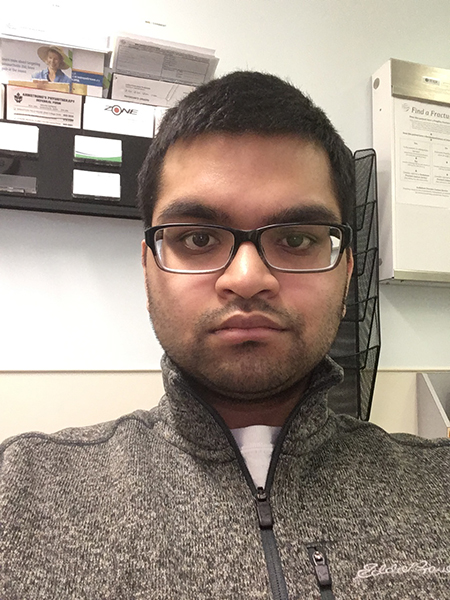
Neurosurgery resident Amit Persad is a 2017 ASTech Awards Finalist.
Amit Persad - First-year neurosurgery resident and 2017 ASTech Awards Finalist
What activities led to your ASTech Award nomination?
The main activities that got me nominated were co-founding the non-profit organization TeamUP Science, an event that brought kids from underprivileged backgrounds to the university to get them exposed and interested in science; developing LiveBook, an innovative platform for medical learning; and my research on brain proteins and their effect on development and repair of the nervous system.
I started TeamUP Science with a close friend in 2011. We decided that we would organize the event ourselves and it later became the Interdisciplinary Science Competition, which now serves 100 high school kids per year. TeamUP Science also runs workshops in medicine, engineering and computing science.
The creation of LiveBook was actually a bit of an accident. I decided to learn computing science during medical school as it is a useful tool for any field. While playing around with looping systems, I got the idea to make a virtual patient. Most of these patient simulators work based on multiple choice input, and after a quick search I found that nobody had done what I was thinking about creating. I put together a prototype and approached Sarah Forgie, a medical education expert. She liked it and got me hooked up with her team including Eleni Stroulia, a computer scientist, and it's all gone from there.
My research with Roseline Godbout started during my BSc biochemistry studies. I became involved with a project investigating regulation of a protein that adds sugars to proteins on neurons. While investigating this protein, I found a link that seemed to connect this process to a family of transcription factors. After discussing with Godbout, I took on that separate branch of the project on my own and have moved forward with it since then. It is exciting work, and I think we may gain insight into the way that neurons are regulated and potentially into possible healing of neurons from this work.
Why are you passionate about technology and innovation?
I think it comes from a passion to improve what needs improving. I have always been curious as a child, asking why things work the way they do and assembling and disassembling my toys. As I grew, this matured into a love for exploring the unknown. I see technology as a vehicle for improving discovery, which leads to innovation and development. It is a cycle that ends with improvement of the functioning of various parts of our communities, such as health care and infrastructure.
Do you plan to incorporate these activities into your career long-term?
Yes. I chose my career as academic neurosurgery, meaning not just a clinical and surgical practice, but also an active lab and a component of surgical innovation. I plan to do a PhD during my neurosurgical training in order to increase my expertise in research science and innovation, and to one day lead development as a faculty member.
Why do you think innovation is important in medicine?
Innovation is important everywhere. In medicine it is particularly important because it is a field where lack of understanding or treatment results directly in loss of human life or quality of life.
Using my field of study in neurosurgery as an example, we do not have excellent treatments for many neurosurgical disorders. Continued exploration and innovation in the field is leading to better knowledge and treatment availability every day. Without innovation, patient outcomes would stagnate. We would never have gotten past bloodletting.